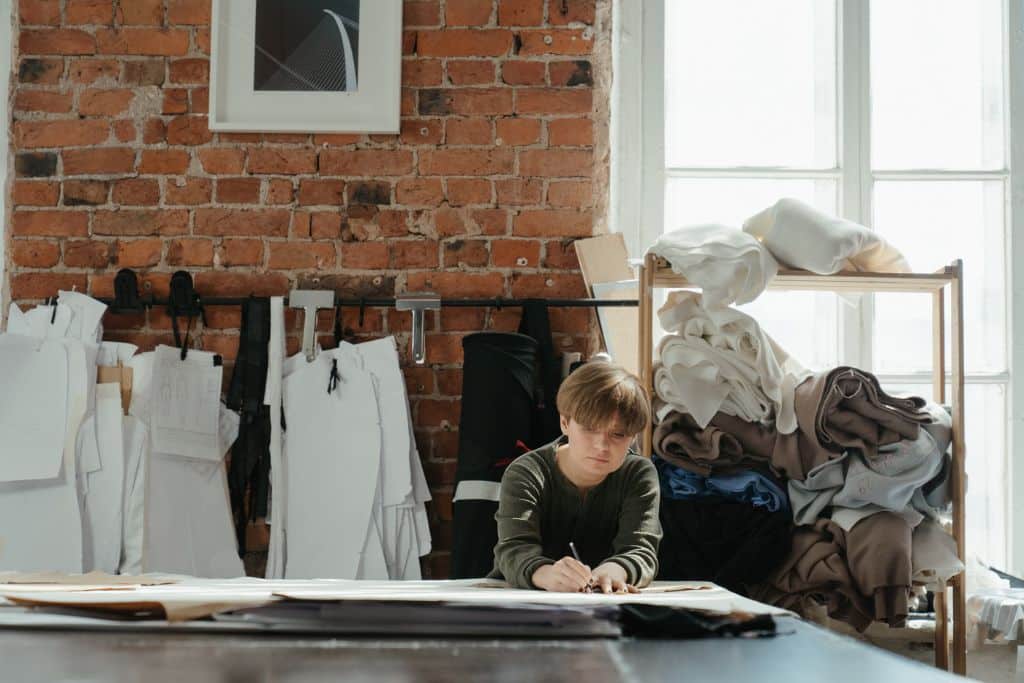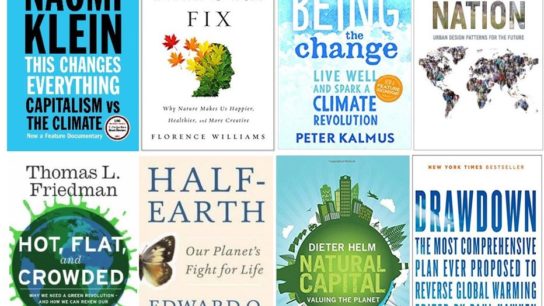Fast fashion retailers, with their need to constantly meet growing sales goals and investor expectations, give little recognition to climate change and workers’ interests. The slow fashion movement asks companies to hit the brakes on excessive production and unethical practices that plague the industry, inviting consumers to rethink their relationship with clothes and shopping. What is slow fashion, how does it differs from the unsustainable fast fashion market, and why should we do more to support this movement?
—
As fashion takes steps towards sustainability, you have probably heard a slew of new terms and movements such as circular fashion, eco-fashion, or sustainable fashion. They are overlapping terms with slight differences, but all of them have the same goal: to reduce the environmental footprint of the fashion industry.
You might also like: Fast Fashion and Its Environmental Impact
What Is Slow Fashion?
Slow fashion is a movement that advocates for environmental and social justice in the fashion industry. Its defining point is that it zeroes in on the problem of overproduction and overconsumption.
Slow fashion came at the heels of the “slow food” movement. Fashion and sustainability journalist and researcher Kate Fletcher first used the term in a 2007 article for The Ecologist.
She described fast fashion as being not much about speed but rather greed, about “selling more” and “making more money.” Instead, slow fashion “is about designing, producing, consuming, and living better”. “Slow” – she added – “is not the opposite of fast – there is no dualism – but a different approach in which designers, buyers, retailers, and consumers are more aware of the impacts of products on workers, communities, and ecosystems”.
When shoppers support the unsustainable model of fast fashion production, the problem only gets worse. Slow fashion is also about conscious consumption. We shop with the awareness that the way we consume has an impact on climate change.
Some of slow fashion’s key philosophies include:
- A shift from quantity to quality, both in production and consumption. It’s not hell-bent on constant growth or accumulating more.
- Manufacturing that respects the environment by using low-waste processes and avoiding harmful chemicals.
- Providing workers a living wage and healthy working conditions.
- Producing collections in small batches or on a pre-order basis to avoid unsold inventory.
- An uncomplicated supply chain where raw materials and labour aren’t scattered across the globe. It uses local materials and employs local workers as much as possible.
- Transparency and honesty in its supply chain and practices. A great example is ethical jeans brand HNST, which has a “Hall of Fail” page that showcases its challenges and failures.
- Using natural fibres, deadstock fabrics, or old textiles for upcycling.
You might also like: How to Recognise Fast Fashion Brands and Which Ones to Avoid
Fashion’s Sustainability Problem
The fashion industry likes to do things fast and cheaply to get maximum profit. Low prices for the latest style entice buyers into thinking they’re getting more bang for their buck, but these “savings” come with high environmental and social costs.
The industry is a huge offender when it comes to the depletion of natural resources and pollution of ecosystems. It accounts for 20% of global clean water pollution. Various sources say that Big Fashion contributes somewhere between 2-10% of the world’s carbon emissions.
To save costs on labour and to get around strict regulations in the US or Europe, retailers outsource manufacturing to countries like China, Bangladesh, or Pakistan. A t-shirt you are wearing may be using cotton grown in the United States, dyed and processed in a textile plant in India, and cut and designed in Europe before travelling back to the company’s warehouse and finally making it in-store. The UN Framework Convention on Climate Change says that the industry consumes more energy than the aviation and shipping industries combined.
How Fashion Picked Up Speed
Fashion wasn’t always like this. Before the 19th century, people took the time to make their own clothes or had them made at a tailor’s if they could afford it. It was a hands-on, personalised process that involved communication between the wearer and creator. Waiting a week or so for a dress to be finished made people value their clothing more. Splurging on new clothes and trends was something that only aristocrats indulged in; so regular folk without a royal budget invested in fabrics that were made to last.
The industrial revolution came and ready-to-wear became popular from the 1920s to 1980, but there were still people making their own clothes or going to local dressmakers.
All that changed in the 90s when high street retailers like Zara and H&M disrupted the industry, compressing trend cycles and purging out thousands of new items in stores weekly. If we thought that was as revolutionary as it gets, along comes new challengers like Shein or Pretty Little Thing – online-only stores that upended the fast fashion giants with an ultra-fast fashion model. Relying heavily on big data and an influencer worship culture, these new brands successfully conquered social media feeds and shoppers’ wallets. Bloomberg’s David Fickling calls Shein’s 2022 valuation of $100 billion a “win for fast fashion”. This year, the company is set to make $20 billion in revenue.
You might also like: 7 Fast Fashion Companies Responsible for Environmental Pollution
With clothing that is cheap and easy to acquire, we often do not even question where our clothes come from or how they are really made. Makers and wearers are continents apart. When it comes to choosing styles and materials, it is the companies that get to decide. It was only after disasters like the 2013 Rana Plaza garment factory collapse or the 2011 “killer jeans” silicosis exposé that the public started to pay attention to the silent workers suffering from the deadly practices of an industry that makes seemingly innocuous items.
How Can You Join the Slow Fashion Movement?
Awareness of the fashion industry’s problems has increased but there is more work to be done. A 2021 survey from ThredUp revealed that 74% of shoppers know their consumption habits significantly impact the planet and 50% believe that fast fashion is harmful to the environment. Despite this awareness, 72% continue to shop fast fashion because of the convenience and unbeatable prices.
It can be difficult to veer away from the status quo and completely flip your shopping habits. The good news is that supporting the slow fashion movement is extremely easy, and you don’t even have to buy anything new to get started!
Here’s how you can make the shift to slow fashion:
1. Repair and Take Care of Your Clothes
Extend the life of your clothes by following care instructions. Machine wash on the lowest heat setting if you can and hang to dry to save on energy. For jeans, Levi’s even recommends washing once every 10 years to maintain the fit and fabric.
Learning basic sewing and de-staining techniques is also a great way to get more wear out of your clothes. If you don’t have time, take them to a professional or find out if there’s a repair café (a free pop-up event where volunteers and other visitors get together to repair various items) in your town or city.
2. Wear Second-hand Clothing
We have finally bid good riddance to the stigma of wearing second-hand clothes. Today, thrifting is so widespread that it is even covered on the pages of glossy high-fashion magazines, something unimaginable until not even two decades ago.
There are many options for getting second-hand clothes. You can borrow from your family or friends’ closets for one-off events. You can also do clothing swaps or offer your own unused clothing to someone you know will love it.
Freecycling groups are also a goldmine for “new” old clothes. These are online sharing groups where people can donate or request free items. It facilitates gift-giving and communication among members of a local community because the exchange is often done in person. It has become increasingly popular as people are looking for ways to donate their stuff without having to go to charity centres. Unfortunately, statistics show that up to 80% of donations end up either incinerated, in landfills, or sent overseas to be sold. Search for a Facebook freecycling group in your area or check out websites like FreeCycle.org or Trash Nothing.
Looking for the thrill of the hunt? There are always one-of-a-kind and stylish pieces from thrift and vintage stores. Online thrifting is easier today thanks to platforms like Poshmark, Depop, Etsy, or Vestiaire Collective; there is something for everyone’s tastes and price points.
3. Shop Mindfully
In Europe, the United Kingdom, and the United States, somewhere between 50%- 80% of people’s wardrobes are unused. A closet bursting with clothes you only semi-love or never wear is also a sign of constant impulse shopping. The next time you feel the itch to shop, check your closet first. Do you really need a fifth new dress/pair of pants/crop top in your closet? Chances are you don’t. Your overfull closet will thank you, and so will the planet.
If you absolutely need to shop, support local creators in your country. Choose high-quality fabrics that last longer, single-composition fabrics that can be easily recycled, or natural fibres that biodegrade easier.
Shopping mindfully also means being aware of companies’ greenwashing tactics. Slapping an “eco-friendly” tag isn’t proof that an item is sustainable. Do some background research on a brand by Googling or checking on the Good on You app. For unbiased and educational sustainable fashion content, websites like Fashion Revolution and Fashion Takes Action are great sources.
Remember that expensive price tags don’t always guarantee better quality and practices. Brands like Versace, Prada, Nike, and Adidas were implicated in a Clean Clothes Campaign paper that reported on these companies’ below-legal worker wages and terrible working conditions in their Eastern European factories.
Conclusion
Fast fashion has industrialised the making of clothes to the point where we think of them as throwaway commodities. Slow fashion is more than just a way of shopping. It’s a lifestyle and a philosophy that acknowledges the real value of clothing and the entire process involved – from materials, the planet, and the people.
You might also like: How to Break Up With Fast Fashion
Featured image by cottonbro from Pexels

















